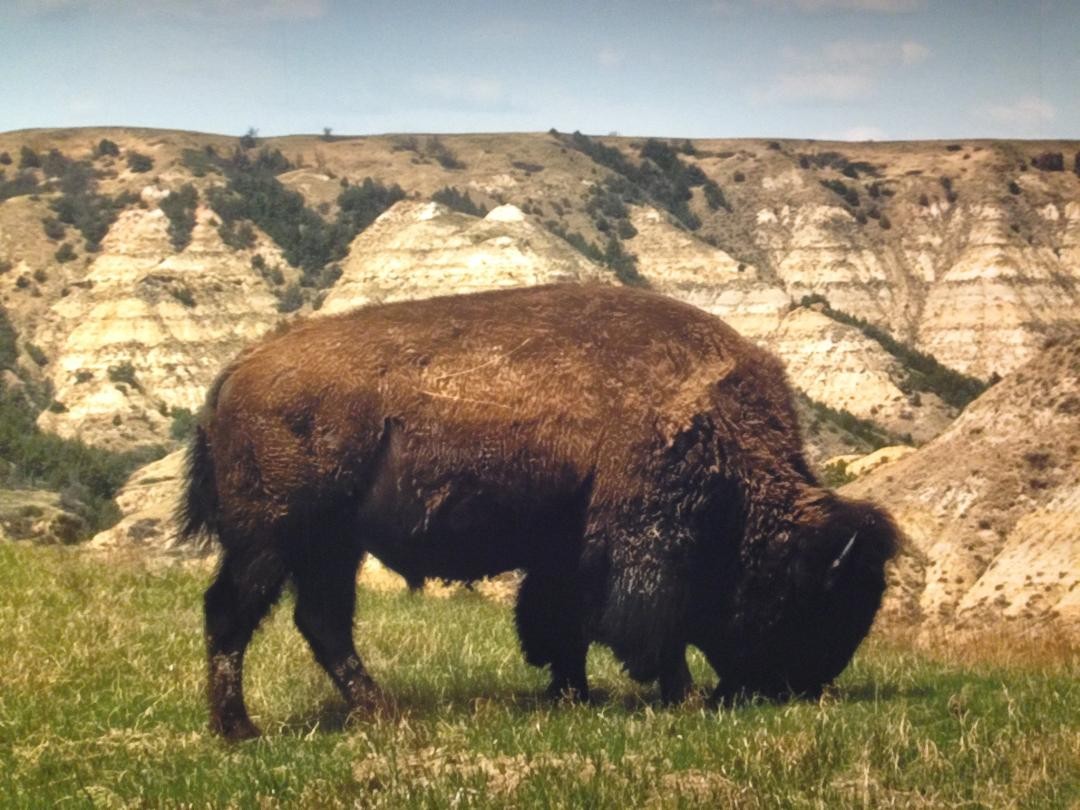American bison
A species of Buffalo, Also known as American buffalo, White bison Scientific name : Bison bison Genus : Buffalo
American bison, A species of Buffalo
Also known as:
American buffalo, White bison
Scientific name: Bison bison
Genus: Buffalo
Content
Description General Info
 Photo By HalfGig , used under CC-BY-SA-3.0 /Cropped and compressed from original
Photo By HalfGig , used under CC-BY-SA-3.0 /Cropped and compressed from original Description
A bison has a shaggy, long, dark-brown winter coat, and a lighter-weight, lighter-brown summer coat. As is typical in ungulates, the male bison is slightly larger than the female and, in some cases, can be considerably heavier. Plains bison are often in the smaller range of sizes, and wood bison in the larger range. Head-rump lengths range from 2 to 2.8 m (6.6 to 9.2 ft) long and the tail adding 30 to 43 cm (12 to 17 in) or up to 65 cm (26 in). Heights at withers in the species can range from 152 to 186 cm (60 to 73 in) for B. b. bison while B. b. athabascae reaches over 2 m (6.6 ft). Weights can range from 318 to 1,000 kg (701 to 2,205 lb) Typical weight ranges in the species were reported as 460 to 988 kg (1,014 to 2,178 lb) in males and 360 to 544 kg (794 to 1,199 lb) in females, the lowest weights probably representing typical weight around the age of sexual maturity at 2 to 3 years of age. Mature bulls tend to be considerably larger than cows. Cow weights have had reported medians of 450 to 495 kg (992 to 1,091 lb), with one small sample averaging 479 kg (1,056 lb), whereas bulls may reportedly weigh a median of 730 kg (1,610 lb) with an average from a small sample of 765 kg (1,687 lb). The heaviest wild bull ever recorded weighed 1,270 kg (2,800 lb). When raised in captivity and farmed for meat, the bison can grow unnaturally heavy and the largest semidomestic bison weighed 1,724 kg (3,801 lb). The heads and forequarters are massive, and both sexes have short, curved horns that can grow up to 2 ft (61 cm) long, which they use in fighting for status within the herd and for defense. Bison are herbivores, grazing on the grasses and sedges of the North American prairies. Their daily schedule involves two-hour periods of grazing, resting, and cud chewing, then moving to a new location to graze again. Sexually mature young bulls may try to start mating with cows by the age of two or three years, but if more mature bulls are present, they may not be able to compete until they reach five years of age. For the first two months of life, calves are lighter in color than mature bison. One very rare condition is the white buffalo, in which the calf turns entirely white. 
General Info
Lifespan
13-20 years
Diet
American bison predominantly forages on grasses, sedge, and other types of vegetation. Seasonally, these mighty herbivores additionally supplement their diets with berries and lichens. Infrequently, they have been known to consume invertebrates and small mammals.
Appearance
American bison is a large mammal with a robust body covered in thick, shaggy dark brown fur. It has a massive head with small eyes, hooves, and distinctive humped shoulders. The animal possesses short, curved horns that are present in both males and females, although males have thicker horns. A mature american bison's tail is long with a tuft at the end, and it has a beard under its chin.
Behavior
American bison are social animals, congregating in large herds, and displaying coordinated group movements. Known for wallowing and horning, they engage in these behaviors for grooming, signaling, and territory marking. Remarkably, they show adaptations for survival in prairie ecosystems, enduring extreme weather conditions without migration or hibernation.
Population
Stable